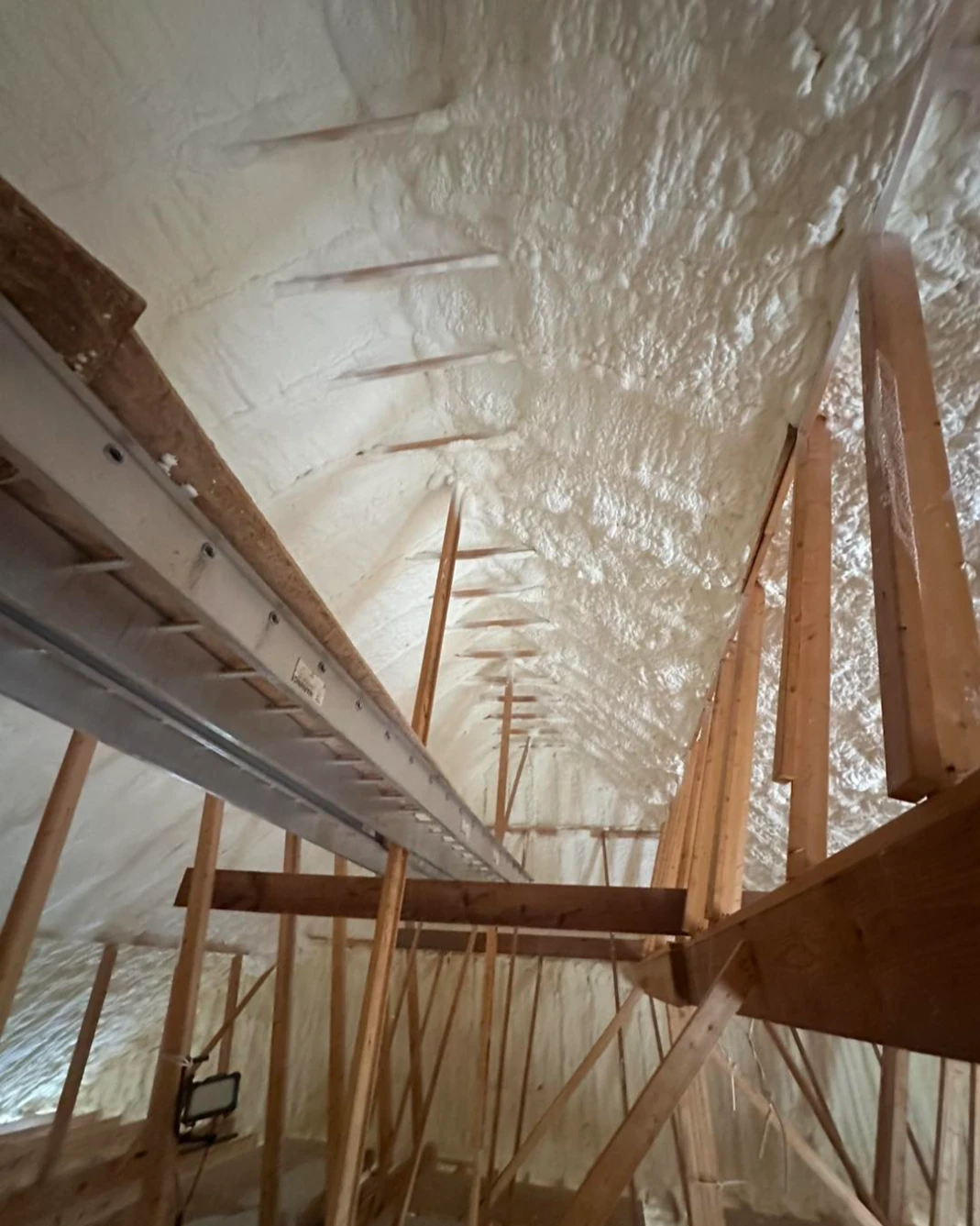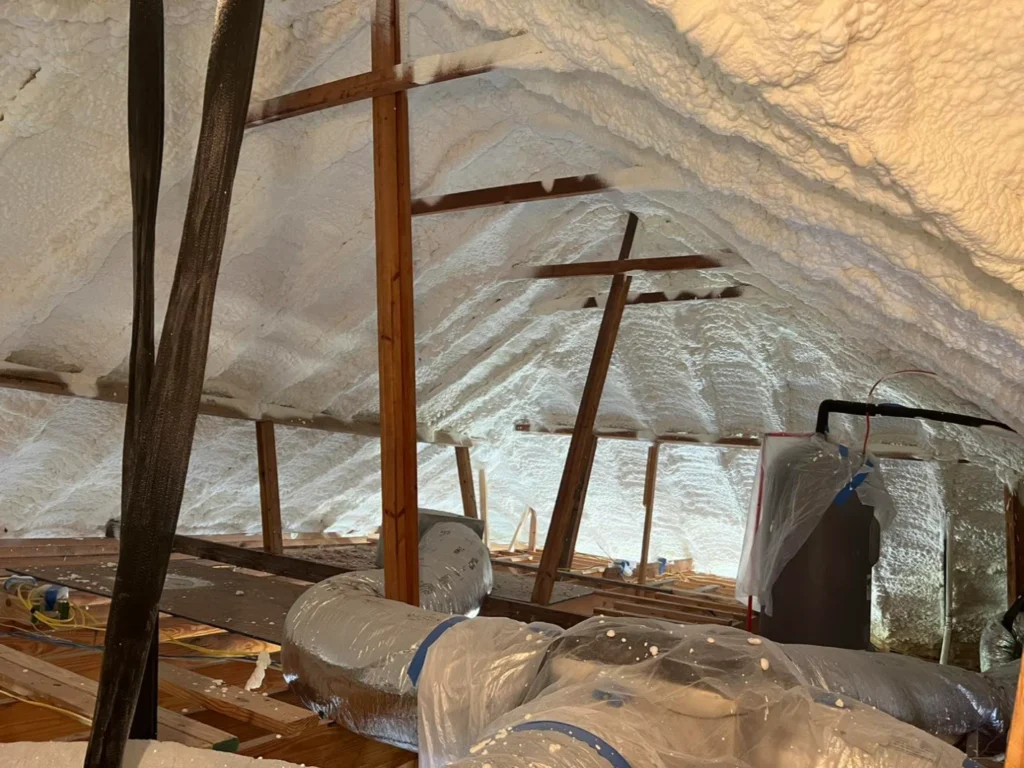For homes in St. Gabriel, Louisiana, spray foam insulation becomes the best solution for attic upgrades when temperature stability, moisture resistance, and long-term energy efficiency are key priorities. Open-cell or closed-cell spray foam significantly improves thermal performance compared to traditional materials, particularly in hot, humid environments where moisture control is critical.
Spray foam is most effective when:
- The attic has complex architecture or hard-to-reach voids.
- High indoor humidity or roof leaks are recurring problems.
- Energy bills are elevated due to poor air sealing.
- Mold prevention is a goal alongside insulation.
This article presents detailed comparisons, performance specs, and regional guidance to help property owners assess whether spray foam is the right choice for their attic upgrade. The technical insights are drawn from direct field experience in residential and light commercial installations across Southern Louisiana.
When Spray Foam Works Best in St. Gabriel
Performance Priorities in Southern Louisiana Climates
St. Gabriel’s climate includes high humidity, long hot seasons, and heavy rainfall. These conditions demand attic insulation that resists air infiltration, maintains stable R-values, and prevents condensation within structural cavities.
Key Applications Where Spray Foam Outperforms
- Attics with non-vented roof assemblies
- Cathedral ceilings or low-slope rooflines
- Homes undergoing HVAC upgrades (conditioned attic spaces)
- Projects targeting long-term energy savings and structural longevity
Comparison Table: Spray Foam vs. Traditional Insulation
| Criteria | Spray Foam (Open/Closed Cell) | Fiberglass Batt | Cellulose Blow-In |
|---|---|---|---|
| Air Sealing | Excellent | Poor | Moderate |
| R-Value per Inch | 3.5-7 | 2.2-3.5 | 3.2-3.8 |
| Moisture Resistance | High (Closed Cell) | Low | Low |
| Mold Resistance | High | Low | Moderate |
| Longevity | 20+ Years | 10-15 Years | 10-15 Years |
| Installation Access | Adapts to irregular spaces | Requires access | Moderate access |
| Sound Dampening | High (Open Cell) | Moderate | Moderate |
Technical Specifications
| Specification | Open Cell Foam | Closed Cell Foam |
|---|---|---|
| R-Value per Inch | 3.6 to 4.2 | 6.0 to 7.0 |
| Density | 0.5 lb/ft³ | 2.0 lb/ft³ |
| Vapor Permeability | High | Low (acts as vapor barrier) |
| Air Impermeability | Yes | Yes |
| Application Thickness | 3-4 inches (attic decks) | 2-3 inches (roofline) |

Practical Experience: What Works and What Doesn’t
Closed-cell foam is preferred in cases where added structural support and moisture control are priorities. It’s often used under roof decks, especially on metal roofs prone to condensation.
Open-cell foam is typically chosen when indoor noise reduction is also desired, such as in attic conversions or homes near industrial zones.
Bonus Tip: Avoid applying open-cell foam too thinly in hot attics. Minimum effective depth is 5.5″ for optimal air sealing.
Things to Consider Before Making a Decision
- Roof Ventilation Plan: Spray foam changes how attic ventilation functions. Confirm compatibility with current HVAC and ventilation systems.
- Budget Constraints: Foam has a higher upfront cost. Evaluate ROI based on energy usage and moisture control needs.
- Local Codes and Permitting: Some parishes require Class II vapor retarders. Verify requirements before scheduling application.
- Existing Roof Condition: Do not apply spray foam to roofs with active leaks or structural issues.
Bonus Tip: In older homes, inspect attic rafters and sheathing for trapped moisture before sealing them with foam.
Common Questions Before Choosing Spray Foam
Will spray foam make my attic too airtight?
Not if the HVAC system and moisture management are properly designed.
Can I apply spray foam over old insulation?
No. Remove old insulation to avoid trapped moisture and pest problems.
What type should I use: open-cell or closed-cell?
Use closed-cell for moisture-prone attics; open-cell for dry, air-sealing-focused upgrades.
Most Relevant Services for Attic Upgrades
- Spray Foam Insulation Contractor: Full-service installation using code-compliant techniques suited for Louisiana’s climate.
- Open Cell Foam Insulation: Best for noise reduction and air sealing where moisture is less of a concern.
- Closed Cell Foam Insulation: Adds thermal resistance and a vapor barrier in humid attic environments.
- Soil Stabilization (if converting attic into load-bearing space): Prevents foundation shifting below retrofitted attics.
Regional Market Data and Insights
- According to the U.S. Department of Energy, spray foam reduces attic air leakage by over 90% compared to batt insulation (DOE, 2023).
- A 2024 report by IBHS found that closed-cell foam under roof decks reduced hurricane uplift by up to 200% in coastal structures (IBHS, 2024).
- Louisiana’s Residential Energy Code mandates sealed attic assemblies in new builds for parishes in humid climate zones (Louisiana State Uniform Construction Code Council, 2023).
Get Expert Insulation Guidance
For expert advice and installation planning for attic upgrades in St. Gabriel, contact:
Polyco Spray Foam Insulation
Phone: +1 225-286-3546
Email: info@polycosprayfoam.com
FAQ About Spray Foam in Attics
How long does spray foam last in an attic?
Well-applied foam insulation can last over 25 years without performance loss.
Is spray foam insulation safe?
Once cured, it’s inert and safe. Installers must follow ventilation and curing protocols during application.
Can spray foam be removed later?
Yes, but it’s labor-intensive. Removal often requires cutting and scraping. Best to commit with confidence.
Does spray foam affect roof shingle warranties?
Some manufacturers claim it does. Always check with your roofing supplier.
Should I insulate attic floors or rooflines?
Insulate rooflines when creating a conditioned attic. Use attic floors only if the attic remains unconditioned.

